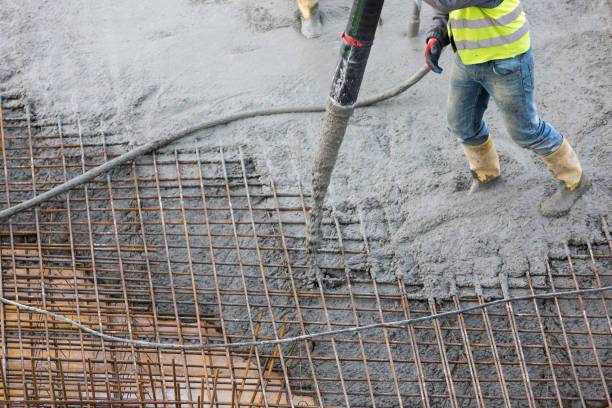Steel reinforcement was a revolutionary invention of the nineteenth century. Steel bars provide strength, allowing for long, cantilevered structures and thinner, less-supported slabs. And because less concrete is required to pour such slabs, construction times are reduced significantly. But do you know how long reinforced concrete lasts?
Engineers in the early twentieth century predicted that reinforced concrete structures would last a very long time, perhaps 1,000 years. In reality, they have a life span of 50-100 years, sometimes less.
What is Reinforced Concrete?
Concrete is a composite material, a cement matrix reinforced with aggregates, that works well in compression but not in tension. That problem can be solved by pouring wet concrete around solid steel reinforcing bars tied together to make a cage.
When the concrete hardens around the bars, we get a new composite material called reinforced concrete, also known as reinforced cement concrete or RCC, which works well in tension or compression: the concrete resists squeezing, which provides compressive strength. In contrast, the steel resists bending and stretching, which provides tensile strength. Reinforced concrete, in essence, uses one composite material inside another: concrete serves as the matrix, while steel bars or wires provide reinforcement.
Steel bars, also known as rebar, short for reinforcing bars, are typically made of twisted strands with nobles or ridges that anchor them firmly inside the concrete without slipping around.
In theory, we could use any material to reinforce concrete. Steel is commonly used because it expands and contracts roughly as much as concrete in heat and cold, which means it will not crack the concrete surrounding it as another material might if it expands more or less. Other materials, such as various plastics, are occasionally used. (Source: Explain That Stuff)
Cracks on the Concrete
Cracks are the last thing you want to see in a concrete building or bridge, especially a relatively new one. But, if concrete structures date back to Roman times, how are some concrete bridges, skyscrapers, and other structures built just a few decades ago, in the late twentieth century, already falling apart?
There are several possible explanations. Older, Roman-type, pozzolanic concrete made from volcanic ash cracks less than more modern forms of concrete, and it was primarily used in compression, so even if cracks formed, they were less likely to spread. Because reinforced concrete is more likely to be used in tension, it contains steel reinforcing rebars. However, as we’ve seen, it can still crack unless prestressed.
Modern concrete fails due to a condition known colloquially as concrete cancer or concrete disease, which involves three interconnected issues. First, alkalis in the cement react with the silica in the aggregates used to make the concrete. This causes new crystals to grow very slowly inside the concrete, taking up more space than the original crystals, causing the concrete to crack from the inside out or flake away from the surface, allowing water in from the outside.
Any water that enters a structure, such as a highway bridge, may be alkaline due to the salts used to treat the road in the winter. The second issue is that the water that gets in will eventually come into contact with the steel reinforcing bars inside, causing them to rust and decay, potentially expanding and causing fatal structural weaknesses.
The dirty brown stains on concrete labeled cancer are frequently caused by rusty water draining through cracks. A third issue is that water seeping inside concrete through cracks can freeze in the winter, causing it to expand and cause new damages through which even more water can penetrate, resulting in a vicious circle of degeneration and decay. (Source: Explain That Stuff)
Image from iStock
